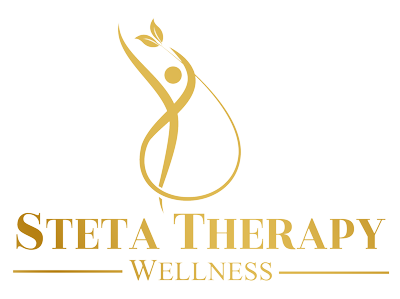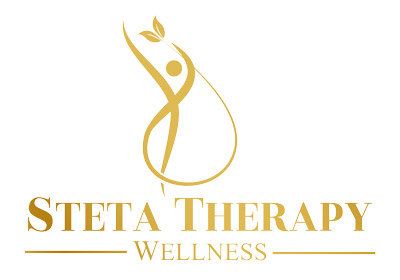
01 May Healing Through Sensation: Unlocking Trauma Recovery with Somatic Experiencing® (SE™)
Many people on a healing journey reach a point where traditional talk therapy isn’t enough. That was the case with one of my long-term clients—let’s call him Jax. After years of therapy, nervous system retraining (like DNRS and Gupta Program), health coaching, breathwork, and even cryotherapy, Jax would still say, “It just feels like there is something stored in my body that I can’t reach.”
That feeling isn’t unusual. Trauma often lives not only in the mind but also in the nervous system. Somatic Experiencing® (SE), a body-based therapy, offers a powerful, holistic approach for releasing deeply held trauma by reconnecting with physical sensations.
Whether you’re a therapist, trauma survivor, or someone curious about body-based healing, Somatic Experiencing® can offer transformative results.
What Is Somatic Experiencing®?
Somatic Experiencing® is a therapeutic method developed by Dr. Peter Levine. It’s based on the idea that trauma becomes “stuck” in the body when we can’t complete the natural stress response cycle.
In nature, animals shake, run, or move after traumatic events—discharging survival energy. Humans, on the other hand, often suppress or freeze these responses.
SE™ helps people gently reconnect with these trapped sensations and release trauma through slow, mindful awareness of the body.
📖 Explore Dr. Levine’s Book on Healing Trauma
How Somatic Experiencing® Differs From Talk Therapy
- Talk therapy: Focuses on thoughts and emotions.
- Somatic Experiencing®: Focuses on physical sensations—the felt sense.
By shifting attention to the body, clients often bypass the analytical mind and access the root of their trauma stored in the nervous system.
Techniques Used in Somatic Experiencing®
Certified SE™ practitioners use several tools to help the body release stored trauma:
- Grounding: Feeling the support of the floor or a chair for stability.
- Breathwork: Deep, rhythmic breathing to calm the nervous system.
- Tracking: Observing physical sensations like tingling or heat.
- Pendulation: Shifting focus between comfort and discomfort to ease tension gradually.
How to Practice Somatic Experiencing® at Home
Even without a professional, you can start integrating somatic practices into your daily routine:
1. Grounding Exercises
Notice your feet on the ground or the weight of your body in a chair. Let your awareness settle in the here and now.
2. Conscious Breathing
Inhale slowly through the nose, exhale through the mouth. Just 2–3 minutes a day can make a difference.
3. Sensory Check-Ins
Pause and ask, “What sensations am I feeling right now?”—even if it’s subtle.
4. Embodied Self-Care
Stretch, walk, or move mindfully to help discharge unprocessed energy.
5. Journaling for Body Awareness
Write about how your body feels under stress or calm. Track patterns over time.
The Neuroscience Behind SE: Why It Works
Somatic Experiencing® is grounded in polyvagal theory, which explores how our autonomic nervous system responds to trauma.
- The vagus nerve helps regulate stress and emotional responses.
- SE™ promotes neuroplasticity, helping the brain and body learn new, safer responses to triggers.
Research shows SE™ is effective in reducing symptoms of PTSD, anxiety, and chronic stress, especially in trauma-impacted populations like veterans.
Real-Life Transformations Through Somatic Experiencing®
Optional Note: This section can be shortened if needed, but user engagement often increases with storytelling.
Let’s consider several moments of mention from the Therapy Room.
- After six months of engaging in Somatic Experiencing® (SE™) practices and supports, Nina, a 35 year old woman with an anxiety presentation (shortness of breath, muscle tension around her chest area, and ruminating thoughts), learned grounding techniques such as feeling her feet press into the floor and tracking her sensations that significantly reduced her panic attacks.
- SE™ helped Jerome, a 45 year old veteran with a PTSD diagnosis, to ease his experience of hypervigilance around noisier environments and the tendency to engage in dissociation and “zone out” when he felt overwhelmed, reconnecting him to the present moment.
- Jamie, 25, who has engaged in a variety of therapy modalities to support processing their childhood experiences and traumas with their family of origin, started to incorporate a daily SE™ practice and started to see some improvement with their ability to manage intense emotions and feel more embodied in the moment with the emotions they are experiencing. For example, they reported when they felt angry with their partner, instead of impulsively reacting with facial expressions and their typical yelling, they removed themselves from the room and took a moment to put their hands on their belly and notice their breath for several moments. Noticing how it moved throughout their body, it helped them to feel their anger shift a bit more as well so they were ready to approach their partner again in a more grounded way.
These stories reveal how SE™ empowers people to reclaim their lives through body awareness.
How to Find a Somatic Experiencing® Practitioner
Working with a certified SE™ practitioner can fast-track your healing:
- Look for SETI Certification – Somatic Experiencing Trauma Institute
- Check Their Niche – Some focus on PTSD, others on anxiety, chronic illness, or childhood trauma.
- Book a Session with me here
Start Your Somatic Healing Journey Today
Somatic Experiencing® reminds us: Your body is not broken. It holds the wisdom to heal.
Whether you’re processing trauma, managing anxiety, or seeking deeper self-awareness, SE™ offers a gentle yet powerful path to healing.
Start small—ground yourself, track sensations, and breathe. And when you’re ready, reach out to a certified practitioner for guidance.
Resources & Links
- DNRS Program: Dynamic Neural Retraining System
- Gupta Program: Mind-Body Healing Approach
- Books by Peter Levine:


No Comments